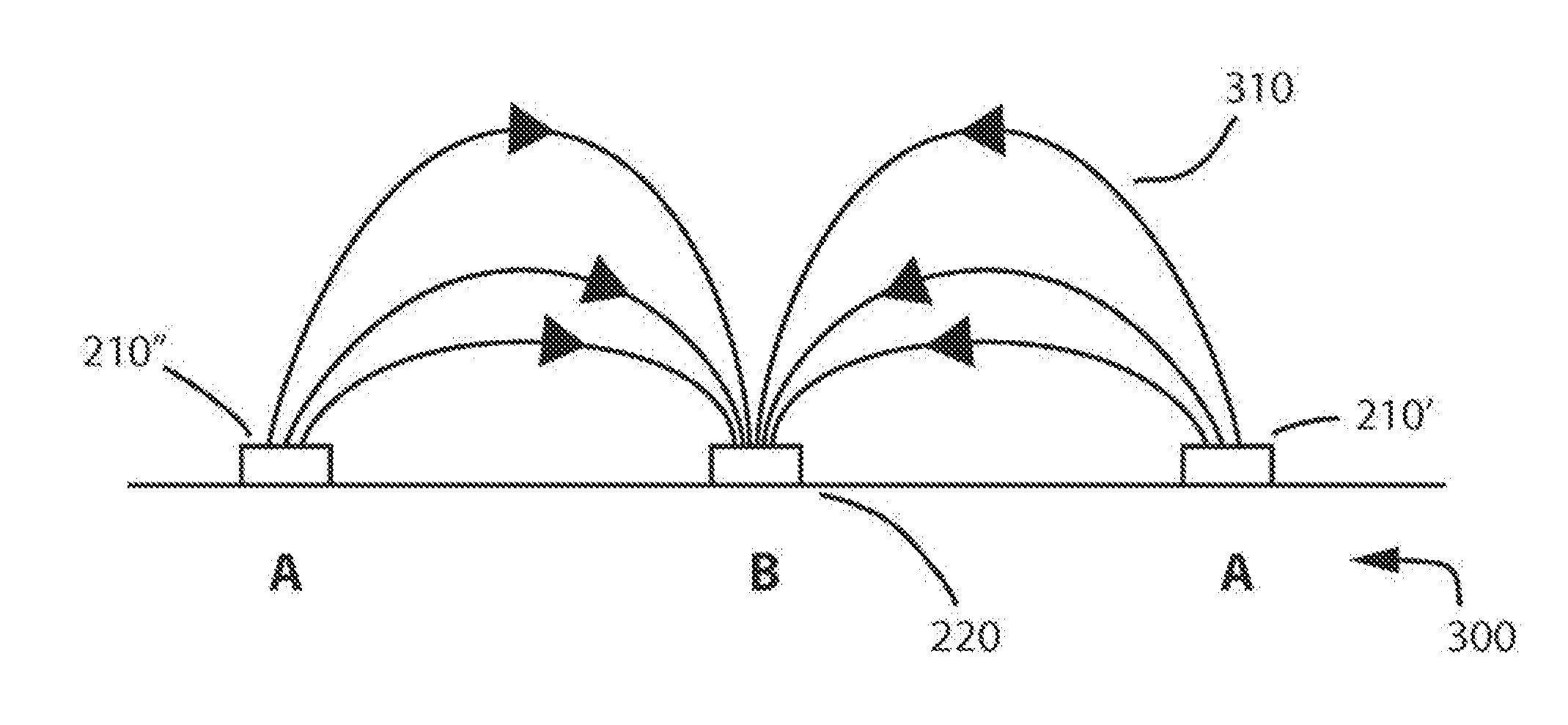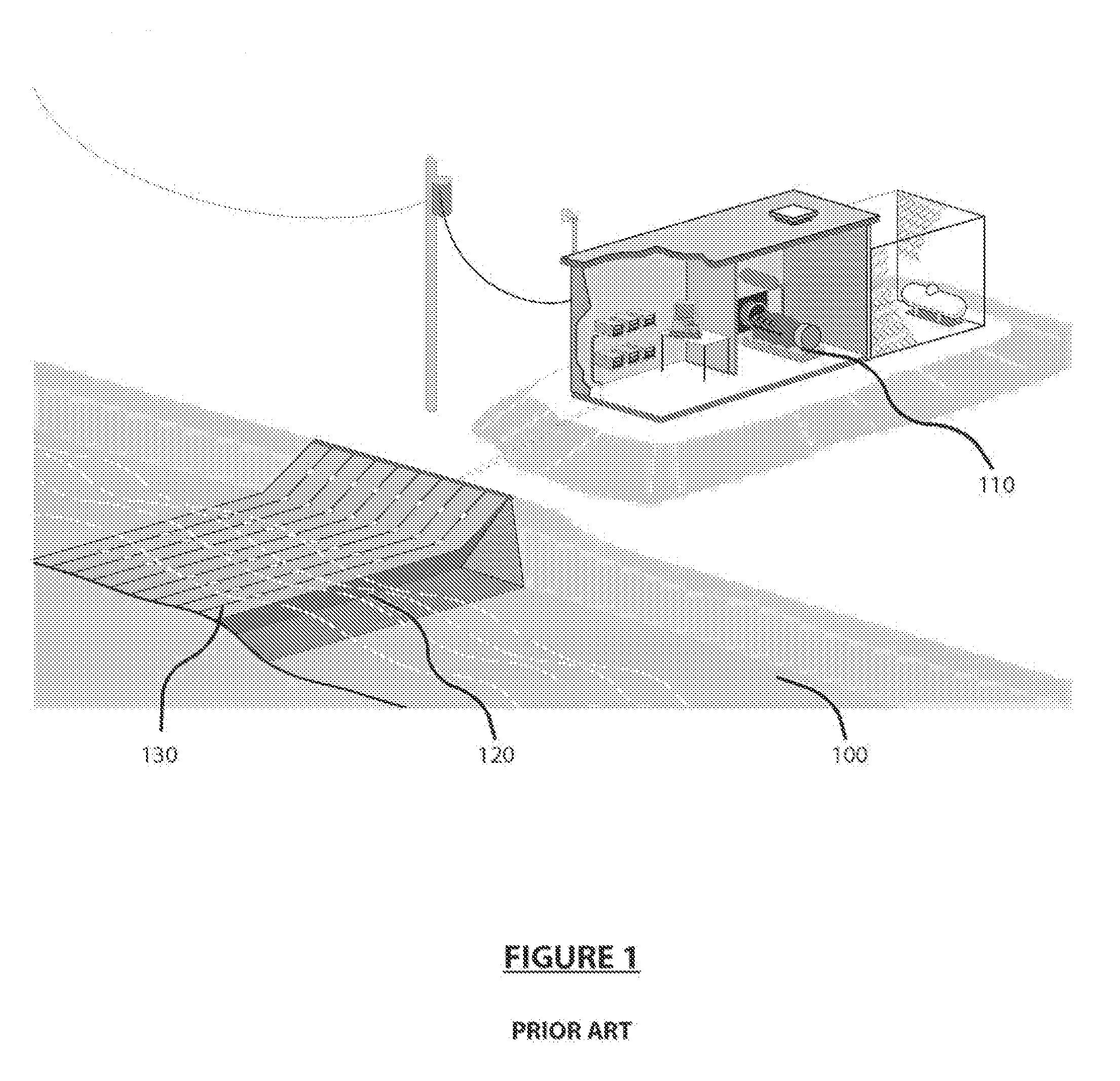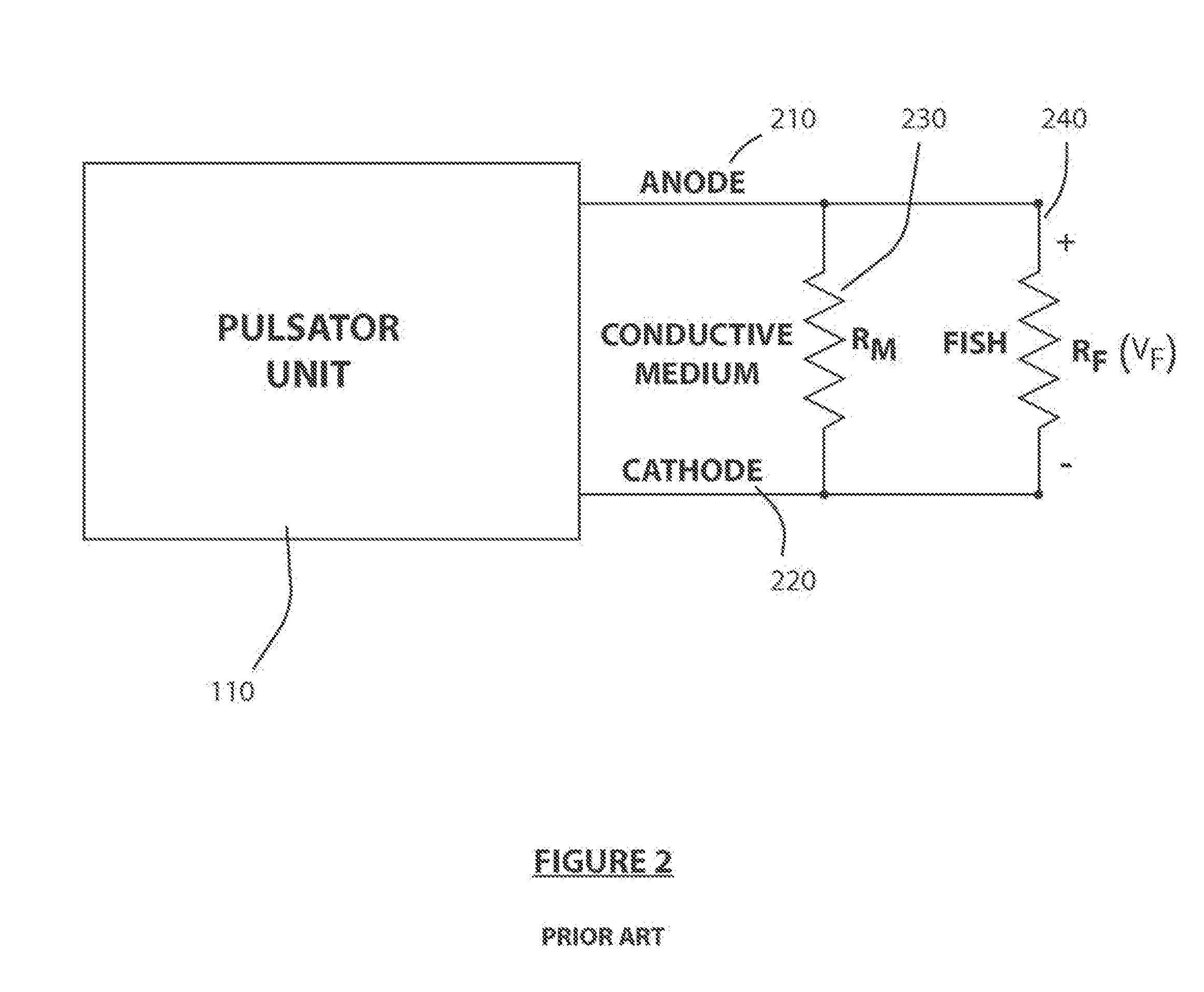Systems and Methods for Electrified fish barriers
a technology of electrification and fish, applied in pisciculture and aquaria, hydraulic engineering apparatus, construction, etc., can solve the problems of increasing the degradation of electrodes, increasing the operational cost, and all electrode degradation, and achieve the effect of increasing the energy field
- Summary
- Abstract
- Description
- Claims
- Application Information
AI Technical Summary
Benefits of technology
Problems solved by technology
Method used
Image
Examples
Embodiment Construction
[0070]Representative embodiments according to the inventive subject matter are shown in FIGS. 1-11, wherein similar features share common reference numerals.
[0071]Now referring to prior art FIG. 1 which illustrates the typical electrical barrier system. This system configuration is an electrified fish barrier 100 which has a pulsator unit 110, an electrode array support structure 120, and an electrode array 130. The pulsator unit 110 provides electrical output as either AC (alternating current) or DC (Direct Current) waveforms. These electrical waveforms may be either continuous or intermittent (e.g. pulsed). The electrical current is passed to the electrode array 130 which is affixed to the support structure 120. During operation, the fish (not shown) that are proximate to the electrode array 130 while the pulsator unit 110 is operating will be entrained or repulsed from the barrier.
[0072]Now referring to prior art FIG. 2 that illustrates a schematic diagram of the pulsator unit 11...
PUM
 Login to View More
Login to View More Abstract
Description
Claims
Application Information
 Login to View More
Login to View More - R&D
- Intellectual Property
- Life Sciences
- Materials
- Tech Scout
- Unparalleled Data Quality
- Higher Quality Content
- 60% Fewer Hallucinations
Browse by: Latest US Patents, China's latest patents, Technical Efficacy Thesaurus, Application Domain, Technology Topic, Popular Technical Reports.
© 2025 PatSnap. All rights reserved.Legal|Privacy policy|Modern Slavery Act Transparency Statement|Sitemap|About US| Contact US: help@patsnap.com



